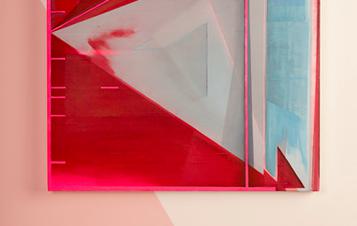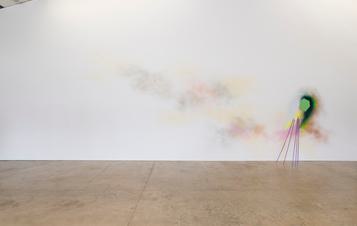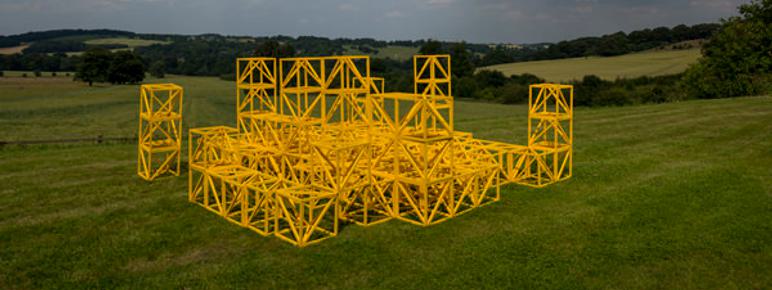
Occasional Geometries: Rana Begum Curates the Arts Council Collection
– Longside GalleryAbout Occasional Geometries: Rana Begum Curates the Arts Council Collection
Bangladeshi-born artist Rana Begum has curated her first exhibition, Occasional Geometries, an exhibition selected largely from the Arts Council Collection.
A scroll through Begum’s Instagram feed immediately reveals a particular personal interest and delight in the occasional geometries of life. This might be the definition of an air vent, the architecture of a stairwell articulated through light and shadow, or the abstract pattern of a handrail.
Begum has selected works from the Arts Council Collection by artists who share a similar viewpoint and also those from different generations. Throughout Longside Gallery, Begum’s selection creates an architectural, spatial and playful experience – one that is animated through movement and changing light. Her approach has been to bring together abstract works that, as she describes, ‘have a soul’. The exhibition takes its name from Richard Wentworth’s photograph Tirana, Occasional Geometries (2000), which features in the show. In his photography, Wentworth documents the everyday, paying attention to objects, occasional and involuntary geometries, as well as uncanny situations that often go unnoticed.
‘Combinations of strong colour and sharp geometry sit strikingly in the light, open space of the gallery’
Soda Lake (1968) by Nigel Hall is a response to the physical geometry of the southern Californian lake of the same name in the Mojave Desert, where the views extend so far it is possible to perceive the curvature of the Earth. Hall observed that ‘spatial intervals and distance were the dominant features of the landscape, which was also intensely silent. It seemed, there, less important for forms to occupy space than that they should have the ability to indicate space and draw attention to it… The subject matter of Soda Lake is space, and its components determine how the space is channelled, trapped or disclosed’.
In Hungarian artist Dora Maurer’s photograph, Studies of Minimal Movements(walk on the seashore with Klaus Groh) (1972), the artist breaks down the simple actions of four people walking by the sea so that the viewer can view the piece ‘as movement, not a photograph of movement’. Maurer’s work encourages discussion, allowing for various interpretations and possibilities, but also focuses on the grammar of geometry and mathematical systems.
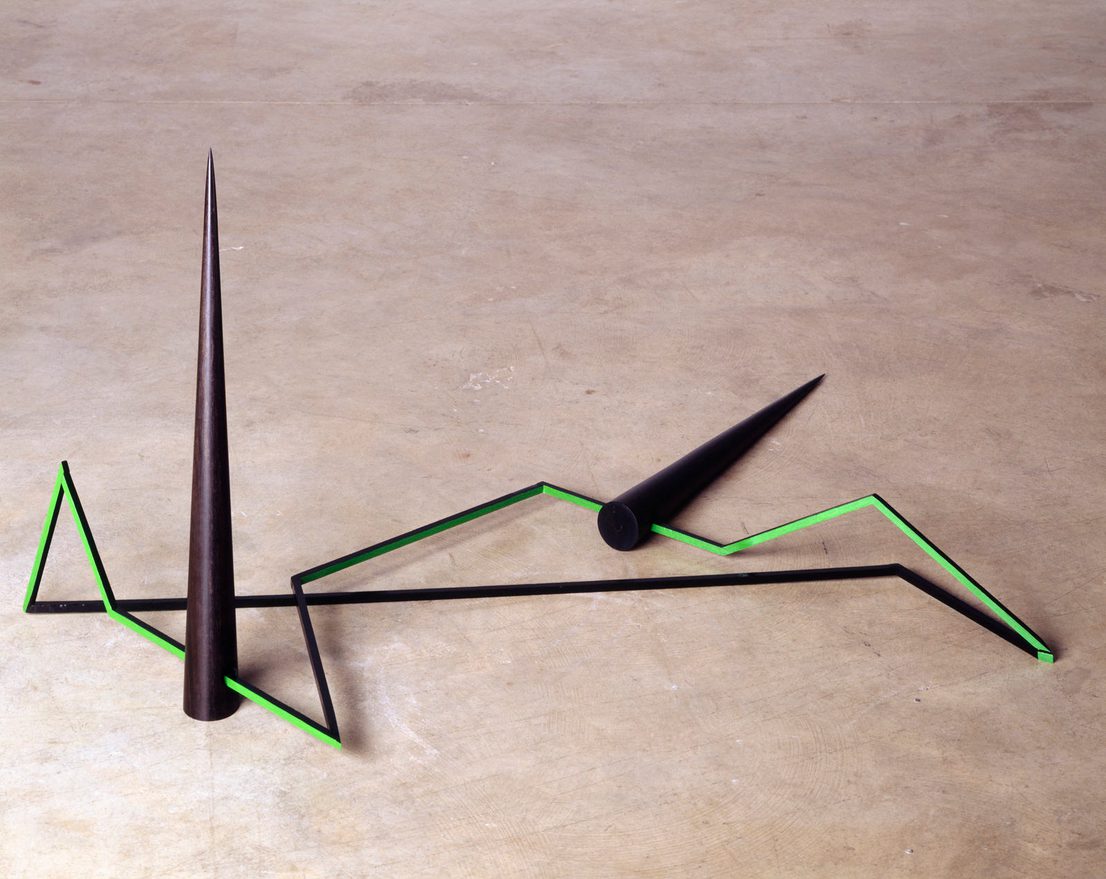
The exhibition also features two new works by British-Pakistani artist, Rasheed Araeen. Jub Chuker Chulay Jayain (When the Chakras Float Away) (2016–17), sees the concept behind two of the artist’s historic works – Chakras and Triangles, made in 1969 and 1970 respectively – combined to create an entirely new work. Jub Chuker Chulay Jayain (When the Chakras Float Away) features painted plywood circles which float on the historic Lower Lake, photographs of which are displayed alongside painted plywood triangles in a 4 x 4 formation. Araeen’s Zero to Infinity (2016–17), a large interactive sculpture made of colourful wooden open-framework cubes, is presented in front of Longside Gallery’s vast windows overlooking the Bretton Estate. Arranged in the open air, the cubes are initially positioned in an ordered structure, but the artist’s intention is for viewers to interact with its components by moving them into new configurations, breaking down the hierarchy of sculpture production.
A strong use of colour continues inside the gallery with Gary Hume’s Fragment of a Rainbow (2011). Hume has divided the rainbow into its seven colour sections and the fragmented arcs of different shapes and sizes are displayed high above eye level as if in a joyful dance around the gallery walls. March of the Valedictorians (2016) by Jesse Darling is a collection of bright red primary school chairs towering above visitors on long, bent legs. In Estelle Thompson's Whiteishwhiteishness (2003) the artist plays with expanses of white paint, set off with light grey rectangles and primary colours, inviting the viewer to explore the painterly nature and tonality of the work.
Occasional Geometries also features work by Barry Martin, Richard Smith, John Carter, Jeremy Moon, Peter Joseph, Noel Forster, Roger Ackling, Kenneth Martin, Normal Dilworth, Hilary Wilson, Gary Woodley, Mona Hatoum, Brad Lochore, Richard Wentworth, Tess Jaray, Estelle Thompson, Eva Rothschild, Matthew Darbyshire, Tomma Abts, Jesse Darling, John Hilliard, Nicky Hirst, Flore Nove Josserand, Charlie Danby, Nathaniel Rackowe, Ayesha Singh, Charlotte Moth and Maria Zahle.
Begum recently won the Abraaj Group Art Prize 2017 and her new commission was unveiled at the 11th edition of Art Dubai in March 2017.
Download the Occasional Geometries Talking Together Card
Download the Occasional Geometries Drawing Together Card
Download the Occasional Geometries Publication

You might also like
More
Louise Lockhart: Cake Crumbs and Lemonade
–Cake Crumbs and Lemonade will be the largest solo exhibition to date by illustrator Louise Lockhart (aka The Printed Peanut).- Profile

Hannah Cork
- Art Outdoors
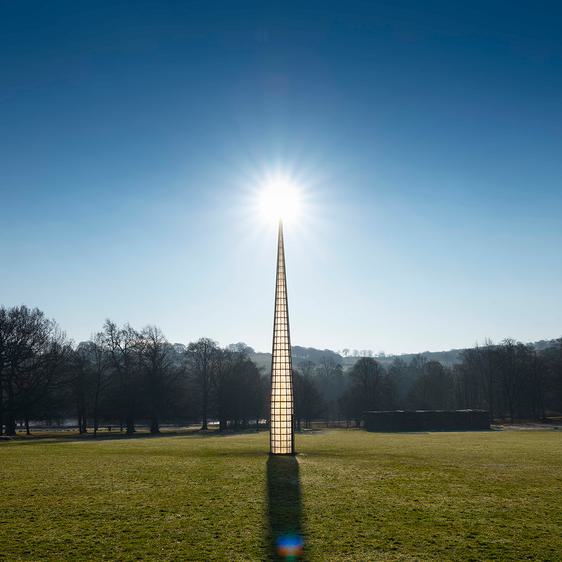
Kimsooja: A Needle Woman: Galaxy was a Memory, Earth is a Souvenir
Kimsooja developed this elegant and towering conical sculpture in collaboration with scientists at Cornell University. The nanopolymer in which its panels are covered enhances the refractive qualities of light, giving an iridescent effect similar to that which occurs naturally on the wings of a butterfly or a beetle’s shell. It is responsive to changing light conditions and brought to life by sunlight on its surface. - News
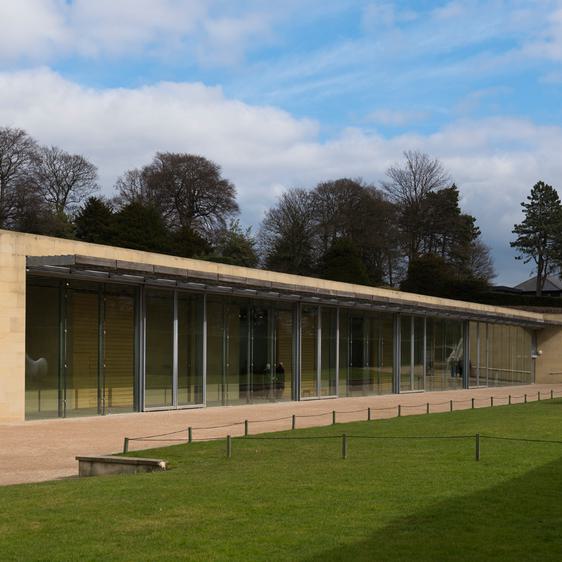
YSP Chair of Trustees, Peter Clegg, awarded an OBE for ‘Services to Architecture’ in King Charles’ New Year Honours List.
8 January 2025

